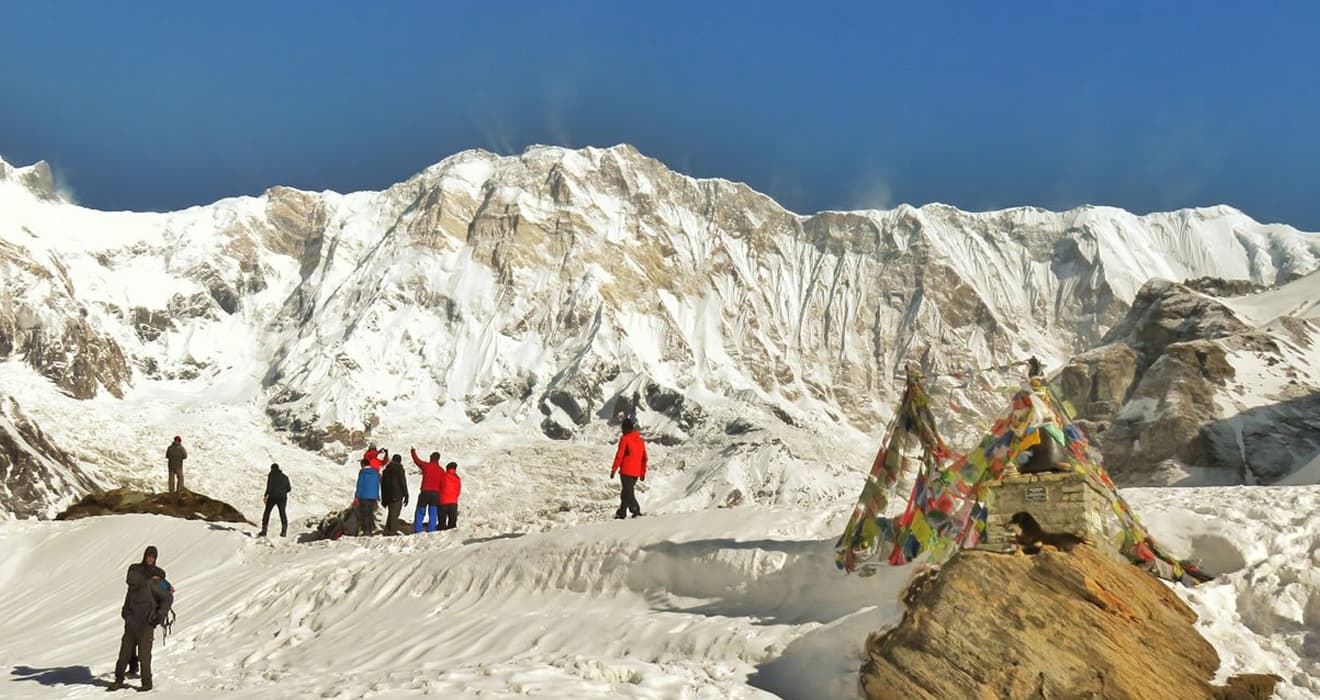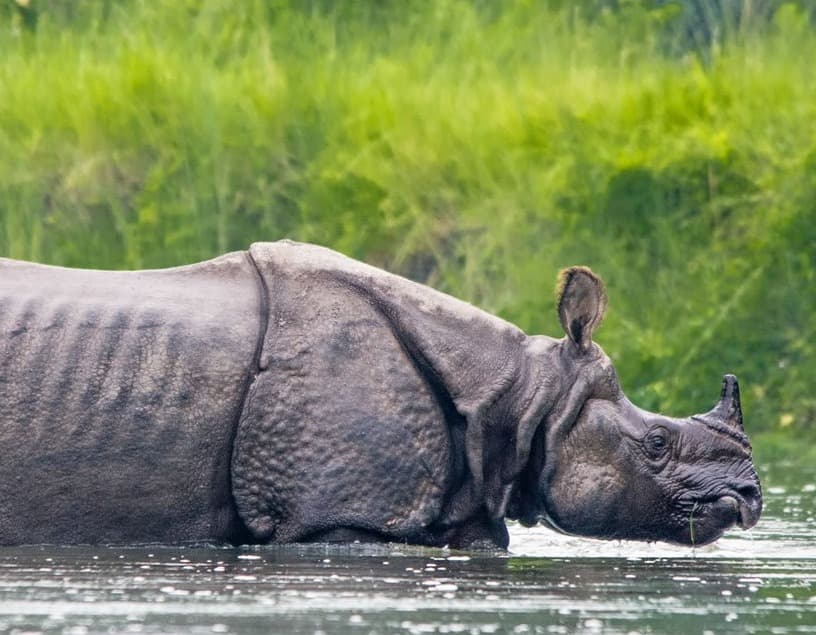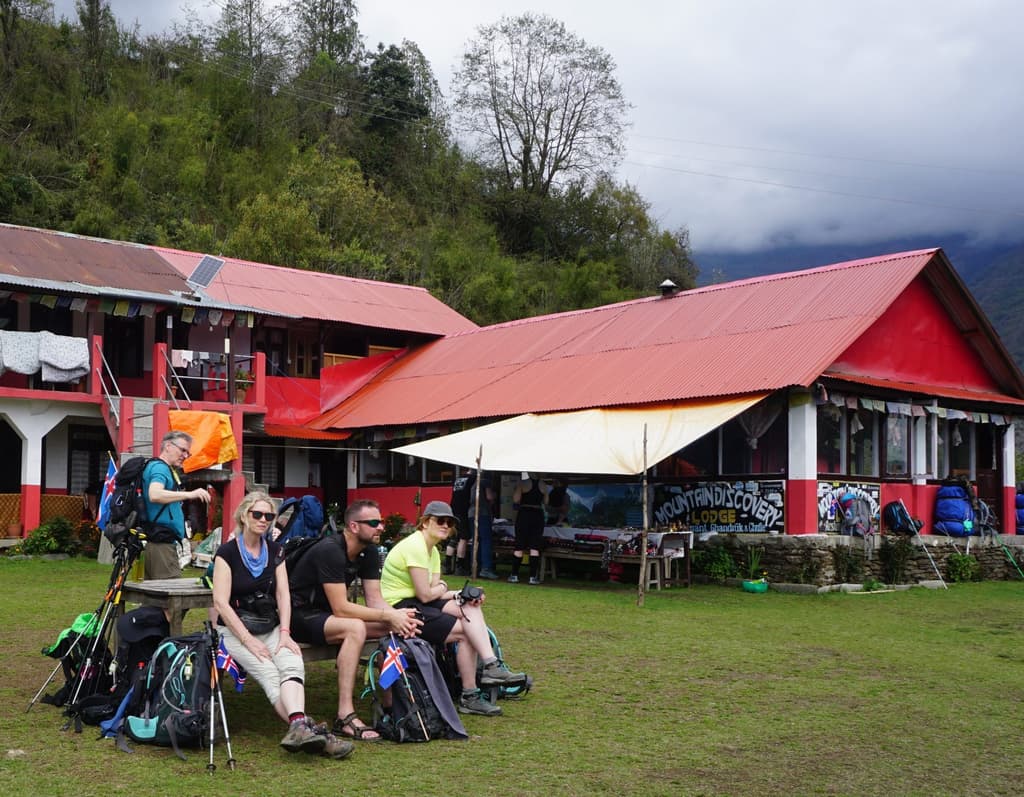Any hiking to the Annapurna region is splendid and wonderful. All trekking routes of the Annapurna region expose you to a perfect amalgam of nature and social brilliance. Here travelers can see the genuine grandeur of Mother Nature that has been gifted to Nepal. Similarly, trekking in Nepal is one of the people's favorite travel activities to taste the Himalayan beauty; the Annapurna trek is one of Nepal's most popular trekking destinations.
Additionally, the treks' easy accessibility and convenient nature make it even more popular amongst nature lovers. The rivers, forests, mountain views, terraced farmlands, paths through the hills, and traditional villages highlight the Annapurna trek. Therefore, the Annapurna region is the perfect destination for mountain trekking in Nepal. So this is for all those people who are thinking of trekking in the Annapurna region. Here we have included all the information you need to know about Annapurna Trekking.
So go through the given points about all you need to know about the Annapurna trek before going for the trek.
Before we move on to the things we need to read or know before going for a trek in the Annapurna region, we need to know various trekking routes. For instance, Annapurna Base Camp trek, Annapurna Circuit Trek, Mardi Himal Trek, Ghorepani Poon Hill Trek, Upper Mustang Trek, and many more fall into the Annapurna region. However, all of these trails entail different experiences. Nonetheless, the information provided here is relevant to all the trekking routes in the Annapurna region.
#Points to note before hiking to Annapurna Trek
Is the Annapurna Trek suitable for you?
Many people fail to recognize if their dream Himalayan destination is right for them or not. Because Himalayan destinations are not like vacationing in deserts or beaches or historical landmarks. Vacationing in the Himalayas of Nepal or any other country requires some prior preparation. Traveling itself is a physical activity, and trekking, one of the travel genres, requires an excellent endurance level. So it is essential to know whether the destination you are opting for is suitable for you or not and if you have time and energy to do the trek. In the case of the Annapurna trek, it has many trails that are conceivable by many people without any restrictions. But having prior training and exercise to increase the endurance level is a must to do before hiking to Annapurna Trek. Henceforth, most treks in the Annapurna region are suitable for various age ranges. Similarly, it is a moderate trek. Therefore, anyone can smoothly complete this trek even without prior trekking experience.
Altitude/Height of Annapurna Trek
Most of the Annapurna region treks are high-altitude treks above 4000m above sea level and 12000 feet above. Some trails like Ghorepani Poon Hill are short and easy treks that only reach about 3200 M / 10475ft. Similarly, Annapurna Base Camp sits at the height of 4,130 meters and 13,550 feet, which offers stunning Himalayas vistas. The altitude of the Annapurna base camp trek is pretty high, which makes Annapurna base camp a high-altitude trek. Reaching this height can be challenging, but it is not difficult.
On the same note, there are different trails like Mardi Himal trek, Upper Mustang trek, Annapurna Circuit Trek, and many more. Hence, before opting for any of the trails mentioned above, research the height/ altitude. Because it is essential to know whether the trek you are thinking of doing is suitable for you or not. All trail cruises through fantastic land formations, deep valleys, lush jungles, and roaring rivers. Besides these fantastic features, another highlight of the Annapurna trek is the traditional ethnic villages. Therefore, you will reach incredible heights by experiencing unique social and natural features.
Trekking Grade
All of the treks in the Annapurna region are graded to moderate levels of the trek. Short treks like Ghorepani Poon Hill Trek are graded as easy treks. At the same time, treks like Mardi Himal trek, Annapurna Base Camp trek, Upper Mustang Trek, Annapurna Circuit trek are graded as a moderate level of the trek. These treks, as mentioned above, go more than the heights of 4000m above sea level.
Hence, it should be approached steadily. Similarly, the trail consists of rough yet simple paths that sometimes are steep, uphill, and narrow. Nonetheless, the trail is not too much on the legs hence treks in the Annapurna region are graded from easy to moderate. Therefore, many people, despite their age range, trekking in the Annapurna region.
Difficulty factor and possibility of altitude sickness during Annapurna Trek
There are not many complicated factors in the Annapurna trekking. It is a straightforward trek with not many walking difficulties. However, the above routes follow through river banks, ethnic villages, lush jungles, which entail walking through steep hills and narrow paths. Although the trails may not be difficult to walk on, there is a good chance of suffering from Altitude sickness if rushed. Because even though trails are easy enough to walk, it is still a high-altitude region. So it is suggested that not rush or hurry the trek. Rushing during the trek is one of the reasons for quickly suffering through mountain sickness.
More than that, while on any trek in the Annapurna region, staying hydrated is very important. Together with that, no one should try to surpass their trekking destination set for a particular day. With these in mind, you shall smoothly finish any trek in the Annapurna region and avoid suffering from sickness.
An ideal time for Annapurna Trekking
Unlike many trekking regions of Nepal, the Annapurna region is doable all 12 months of the year. It is a pretty accessible trekking region. You will meet trekkers at any time of the year you go hiking in this region. However, we wouldn’t suggest you all the trekking trails of the Annapurna region all year. Some seasons are not accessible for all four seasons. Because even though the trekking trail is accessible, weather conditions can hinder your journey. For instance, we wouldn’t suggest that trekkers opt for Mardi Himal trek, ABC trek, or Annapurna Circuit trek for all four seasons. We wouldn’t suggest people opt for these trails during the monsoon and winter seasons. The monsoon, which coincides with summer, falls from June to August. And winter tumbles from December to February. The trail is muddy and wet during the monsoon, and you get to see leeches visiting you frequently.
Similarly, there is a high chance of trails getting blocked due to landslides and soil erosion. Similarly, on the same note, we would not recommend you do these treks during winter. The winter in Annapurna is biting cold, and most of the trail gets covered in snow. The cold weather and snow may bother your trekking experience. At the same time, there are chances of encountering an avalanche, too, which is dangerous. Even though the views and ambiance during these seasons are fantastic, it is still not recommended.
Whereas the spring and autumn season is the best to go hiking in the Annapurna region. Spring in Nepal is from March to May, whereas autumn is from September to November. Both seasons offer a grand view of the mountain vistas and the perfect weather. The lush and green environment during spring with splendid mountain views is breathtaking. Similarly, the encounter with Clear Mountain views during autumn is mind-blowing. The sights of Annapurna ranges become simply mesmerizing in autumn.
Also, the Annapurna base camp trek attracts many trekkers during this time of the year due to its perfect weather and glorious mountain views. Therefore, during peak trekking seasons, the Annapurna trek drawbacks are large crowds and busy trails if you are not a people person. Other than that, it is a splendid time to explore this region to experience its raw natural and cultural beauty. Therefore, we highly recommend people navigate this Himalayan trail in the autumn and spring season.
Ghorepani Poon Hill Trek is done all through the year. Due to its easy accessibility and low altitude, the weather does not affect the visiting ambiance for trekkers. This place all through the year remains stunning. Hence, if you are looking for a short and easy trek in the Annapurna region, then Ghorepani Poon Hill is the one.
It is essential to fix the dates to have the best Himalayan experience. Trekking in Nepal is fun, but when you have a particular destination where you want to go, it is even more fun to explore those places when the weather adds its brilliance. Therefore, do choose the best time to do the trek in Annapurna trek. It adds more memories to your journey. Similarly, one little head up, the weather is unpredictable, so be ready to accept unimagined events if the weather changes.
Whether to go guided or unguided
Hiring a trekking guide for the Annapurna trek is a debatable topic. And you may wonder why so? Because with a massive number of sources for information about the trek on the internet, you may think that you can complete the trek and that too unguided following those instructions. But to burst your happy bubble, it is not so. The experiences you read on blogs or articles may be genuine, but the information is forever changing. Other than that, the trails are tricky too.
And exploring trails of Annapurna that mostly goes through a deep forest is not a wise thing to do. Because the trail leads a lot of places which sometimes turns out to overturn your actual route. Hence, to prevent yourself from getting lost in the woods, going with a trekking guide is highly recommended. So without any doubt, whether you are an experienced trekker or not, do not go hiking in the trails of Nepal unguided even if it is a very popular and busy trail like Annapurna Base Camp Trek!
Furthermore, trekking is much more than just figuring out the trails. It requires planning and preparation. Annapurna Base Camp trek of the Annapurna region is one of the commercial routes, so it is pretty busy during the peak trekking season. So you may not want to take unnecessary trouble arranging your accommodation, transportation, and many other factors. And due to these reasons, hiring a reliable trekking company is essential so that they will take care of your vacation from start to finish.
What to expect?
Annapurna region is full of lively trekking ventures so that you can see many things on the trail besides mountains and nature. High on the list to look forward to on the journey is to taste the rural lifestyle of the people living in the Annapurna region. Throughout the journey, one traverses through many ethnic traditional villages. Ghorepani, Ghandruk, Chhomrong, Dovan, Deurali, Bamboo, and many others let you take a peek at Gurung, Magar, and Thakali's life Brahmin, Chhetri, and many more. In addition, you can glance at their daily schedule, which includes activities like working in the farms or fields, grazing the cattle, cutting fodders, and many more.
To see villages engaged in a lifestyle that is foreign to you is interesting. Besides that, you will also experience their cultural performances like singing and dancing in one stopover. Henceforth, besides the brilliance of mountains and getting to see rich cultural values and full-blown interactions with elements of Mother Nature are a few things you can expect or look forward to on the trail.
Where to stay?
Ever since trekking has been allowed in Nepal for a foreigner, trekking trails of Nepal have become more accommodating over the years. In the Annapurna trek, you will find many tea houses on the trail. However, as you move higher, the number starts to thin. Similarly, with the rise in the number, the number of services are also available. You can enjoy all these services from meals to shower, electricity to internet services during Annapurna Trek.
Similarly, be mindful of what you eat for your 3-time meals during the trek. Our suggestion would be to stick with locals' foods, including rice and Dhal or hot noodles. The accommodation is basic and simple but nice and clean. The tea houses will be swamped with trekkers during the peak trekking season, so making a prior reservation is suggested.
Necessary Permits for the Annapurna Trekking:
For trekking in the Annapurna region, you need Annapurna Conservation Area Permit (ACAP) and TIMS card.
For the Annapurna Base Camp trek, Mardi Himal Trek, Annapurna Circuit trek, you will need Annapurna Conservation Area Permit, which costs approx. USD 30 or NPR 3000 per person for foreigners. Similarly, the same ACAP permit for SAARC nationalities is NPR 200 per person. Along with these permits, you will also need to purchase a TIMS card which costs approx. USD 10 or NPR 1000.
However, for Upper Mustang Trek, you need to purchase a particular type of permit. Upper Mustang is a restricted area of Nepal, and so to enter these premises, you need to have a special trekking permit. The cost of a special permit is USD 500 per person for ten days. And for each additional day, you pay an extra USD 50 per day. You cannot travel to Upper Mustang alone and independently too. To trek in Upper Mustang, you need to go through local trekking operators. You can find more information about trekking in Mustang in this blog.
You can obtain these permits and TIMS cards from Nepal Tourism Board Office in Pardashani Marga, Kathmandu. You can also purchase the same permits from Nepal Tourism Board Office in Pokhara. Similarly, you can obtain a TIMS card from the TAAN office in Lakeside, Pokhara.
Training and preparation for the trek:
Trekking in the Annapurna region requires a decent amount of physical fitness and endurance level. Primarily having an excellent level of cardiovascular endurance is most important. You can gain an excellent endurance level by doing activities like walking, jogging, swimming, running, and exercise; for example, you can begin your training by running. Begin running at a moderate pace, and afterward, continue expanding your pace step by step. By the time of your trekking dates, you should be able to cover 5 km in half-hour.
What to take on the trek
Most trekking trails in the Annapurna region are high-altitude treks except Ghorepani Poon Hill Trek. Hence, the list of equipment is relatively longer than what you would take for short hiking trips. That being said, it is imperative to carry the only equipment that you need. Please click this link to check the list of trekking gears you need for the Annapurna trek.
Travel Insurance
Last but not least to note, travel insurance is essential for Annapurna Trek. It would help if you had travel insurance for the trek. So before starting your trek, make sure to purchase travel insurance that is most convenient to your travel nature.
These are some abstracted versions of the information you need to read before going for Annapurna Trek. We hope this information has been helpful in some way in planning your future adventure. If there shall be any questions, please feel free to contact us.



Post a Comment